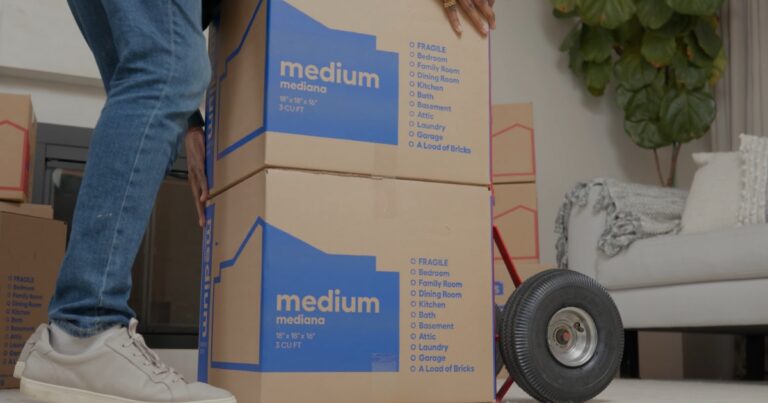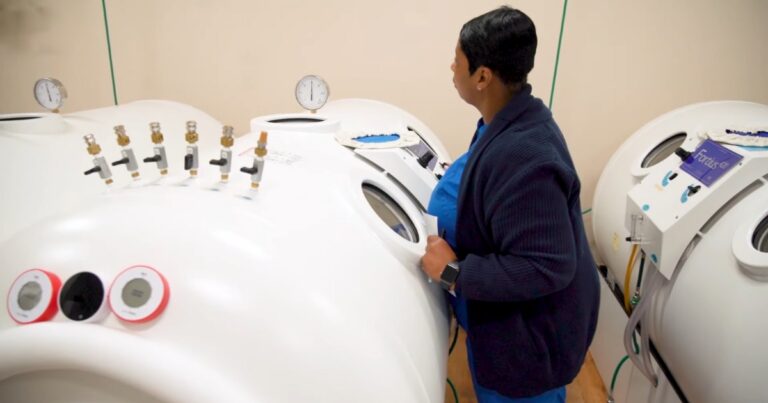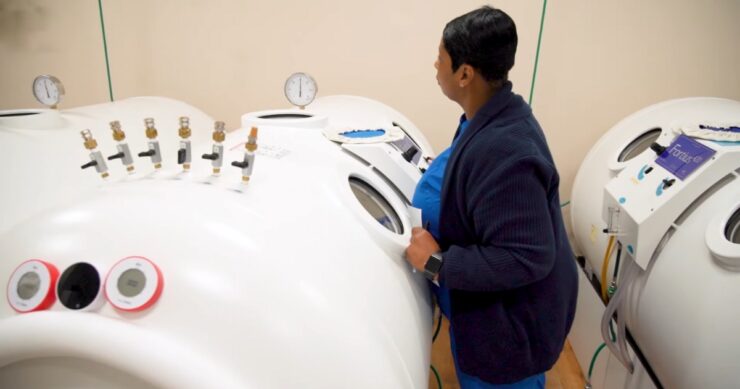Moving house is a significant life event, often marked by a mix of excitement and stress. Among the myriad tasks involved, packing stands out as a daunting challenge. Each room presents its own set of hurdles, but some are notoriously more difficult to tackle than others.
This article dives into the complexities of packing and identifies the hardest room to pack when moving. It also offers practical advice on how to efficiently and effectively manage the packing process.
The Kitchen: A Packing Conundrum
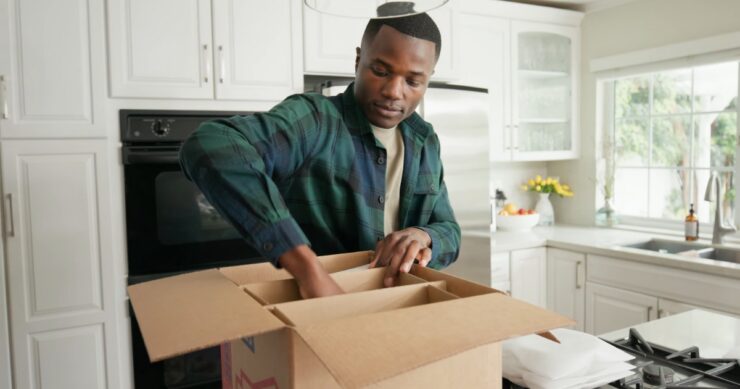
The kitchen is widely regarded as the most challenging room to pack. This is due to a combination of fragile items, oddly shaped appliances, and the sheer volume of things stored in cabinets and drawers.
Pots, pans, glassware, and small appliances require careful handling and strategic packing to avoid damage. If you need help with packing and preparing for your move, check out how professionals at EasyMoveServices can help you with the whole process.
Dealing with Fragile Items
Glassware and fine china are the most vulnerable items in the kitchen. Each piece should be wrapped individually in bubble wrap or packing paper. Using specialized dish pack boxes is a smart move as they provide extra protection with their double-walled construction.
Managing Pots and Pans
Pots and pans can be cumbersome due to their size and shape. Nesting them together saves space, but remember to place a layer of packing paper or bubble wrap between each to prevent scratches. Lids should be wrapped separately and placed near their corresponding pots.
Packing Small Appliances
Small appliances need to be handled with care. If possible, pack them in their original boxes. If not, wrap each appliance in bubble wrap and secure the wrapping with packing tape. Make sure to fill any gaps in the box with paper or foam peanuts to prevent movement during transit.
The Garage: More Than Just a Storage Space
The garage is often a store-all space, making it a challenging room to pack. It contains a wide array of items from tools and sports equipment to seasonal decorations and potentially hazardous materials.
Tackling Tools and Hardware
Tools should be packed securely to avoid injuries. Sharp tools like saws and knives need to be wrapped and clearly labeled. Small hardware like screws and nails can be placed in plastic bags or small containers before being boxed.
Managing Sports Equipment and Bicycles
Sports equipment varies in size and shape, making it tricky to pack. Disassemble items like bicycles as much as possible and wrap each part individually. Balls and smaller items can be placed in large boxes, but ensure they’re not too heavy to lift.
Handling Seasonal Decorations
Seasonal decorations, often fragile and sentimental, require special care. Wrap each item individually and use bubble wrap for delicate ornaments. Label these boxes clearly to ensure they are handled gently.
The Home Office: A Mix of Delicate and Bulky Items
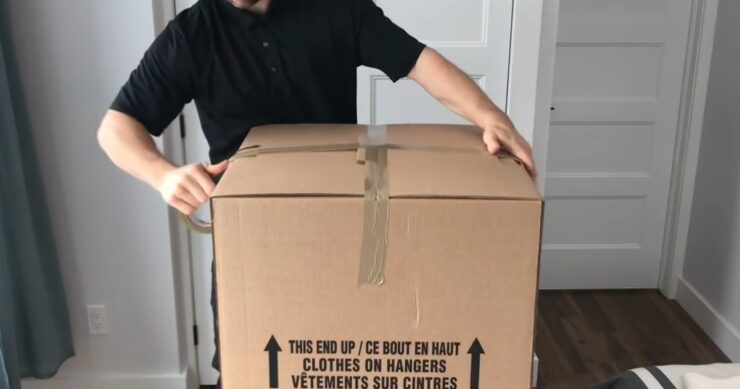
Packing a home office is a mix of dealing with delicate electronics and bulky furniture. This room requires a thoughtful approach to protect valuable equipment and important documents.
Packing Electronics Safely
Electronics like computers, printers, and scanners are sensitive to shock and temperature changes. Use original boxes if available or sturdy boxes with plenty of cushioning. Back up important files before packing and removing ink cartridges from printers.
Dealing with Books and Documents
Books are heavy, and their packing should be planned to avoid overweight boxes. Use small to medium-sized boxes and avoid overfilling them. Important documents should be kept with you during the move for safety and easy access.
Furniture Dismantling
Large desks and bookcases can be difficult to move. Dismantle them if possible, keeping all screws and small parts in a labeled bag. Wrap pieces in moving blankets to protect them during transit.
The Living Room: A Blend of Big and Small
The living room, with its mix of large furniture, electronics, and various small items, presents its challenges. The key here is to break down the task into smaller, manageable parts.
Wrapping Furniture
Couches, chairs, and tables need to be wrapped in moving blankets or shrink wrap. Remove cushions and pack them separately. Glass components like tabletops should be wrapped in bubble wrap and cardboard.
Packing Decor and Artwork
Decor items and artwork require careful handling. Wrap each piece individually, using bubble wrap and packing paper. For larger pieces, create a cardboard sandwich for extra protection.
Electronics and Media
Similar to the home office, pack electronics in their original boxes if possible. DVDs, CDs, and books should be packed in small boxes to manage weight.
Before tackling the challenges of packing, check out these essential tips for a seamless transition when relocating to Las Vegas.
The Bedroom: Clothes, Bedding, and Personal Items
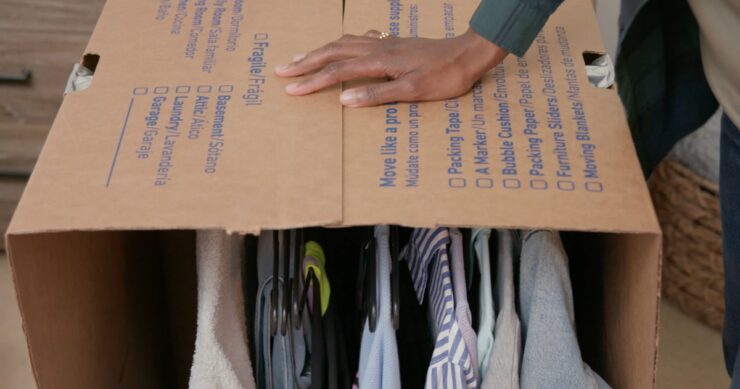
The bedroom seems straightforward but can be time-consuming due to the volume of personal items. Clothes, bedding, and personal items need to be sorted and packed methodically.
Clothing Strategies
Clothes can be packed in wardrobe boxes, suitcases, or even left in dresser drawers if the mover agrees. Vacuum bags are great for bedding and out-of-season clothing, saving space and protecting them from moisture.
Packing Personal Items
Personal items like jewelry and keepsakes should be packed separately and kept with you during the move. Use small boxes and bubble wrap for extra protection.
Children’s Rooms: Toys, Books, and Furniture
Packing a child’s room is about balancing efficiency with maintaining a sense of normalcy for the child. It’s best to involve them in the process, letting them decide on a few essential items to keep out until the last moment.
Packing Toys and Books
Toys and books should be sorted, donating or discarding items that are no longer used. Pack toys in medium-sized boxes and use small boxes for books to keep the weight manageable.
Furniture and Decor
Children’s furniture often has multiple pieces and can be bulky. Dismantle what you can and wrap each piece for protection. Decor items should be wrapped individually and packed securely.
The Bathroom: Small but Tricky
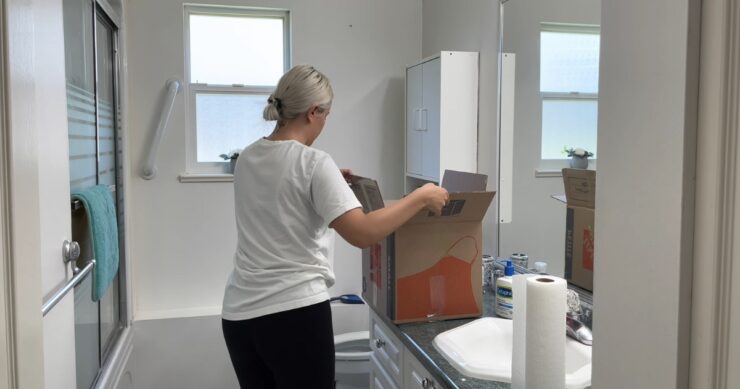
The bathroom may seem easy due to its small size, but it contains a multitude of small, sometimes hazardous items.
Sorting and Packing Toiletries
Sort through toiletries, discarding anything old or nearly empty. Pack remaining items in plastic bags to prevent spills, then place them in boxes. Towels can be used for cushioning.
Medications and First Aid
Medications should be kept with you for easy access. Ensure they are stored in a cool, dry place and clearly labeled.
Packing Linens and Towels
Linens and towels can be packed in boxes or used as cushioning for other items. Vacuum bags are also an effective way to pack these items compactly.
Final Thoughts
Packing for a move can seem overwhelming, but tackling it room by room makes the process more manageable. The key is to start early, stay organized, and approach each room with a plan tailored to its specific challenges. By following these guidelines, you can pack efficiently and reduce the stress associated with moving.

